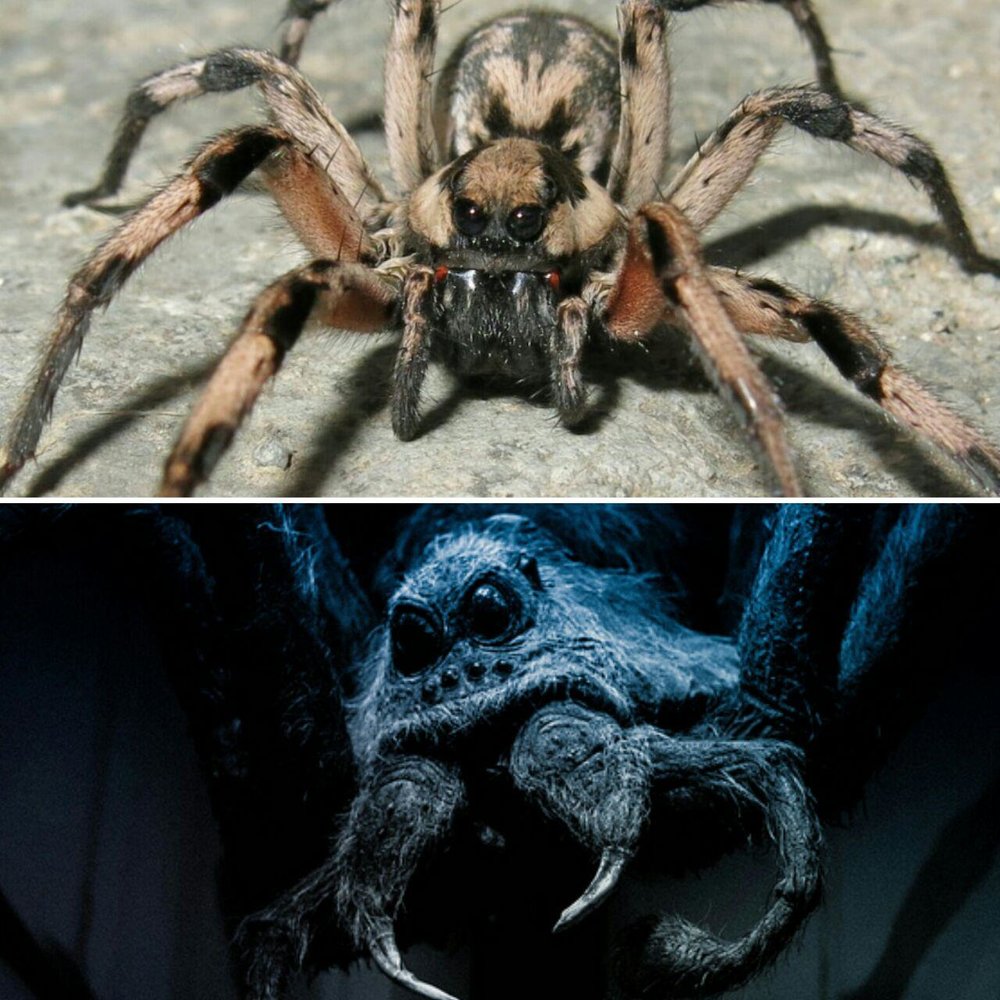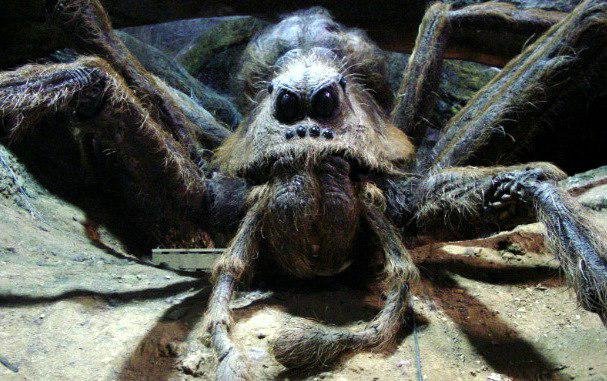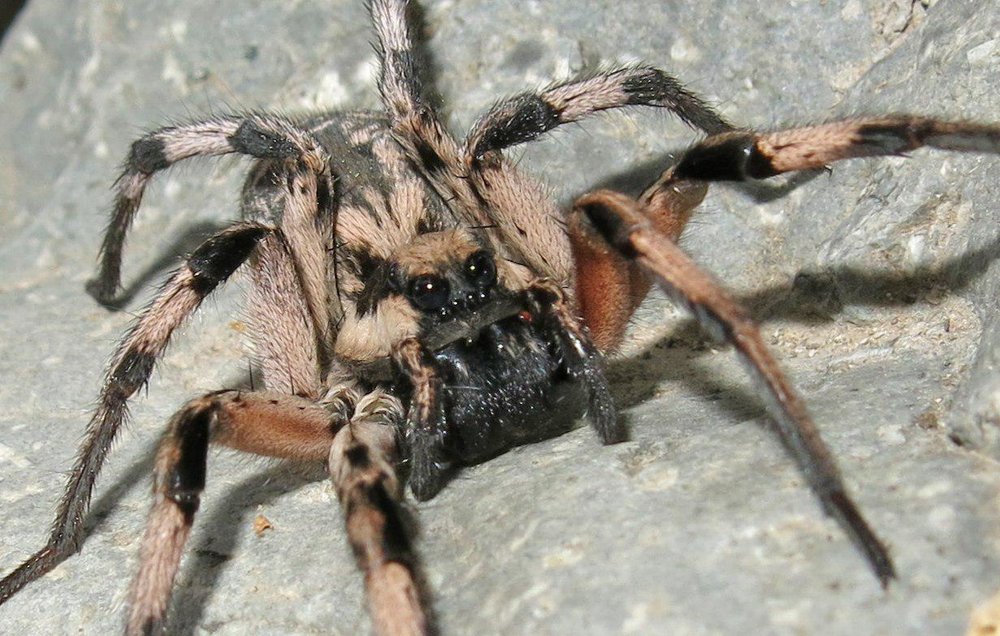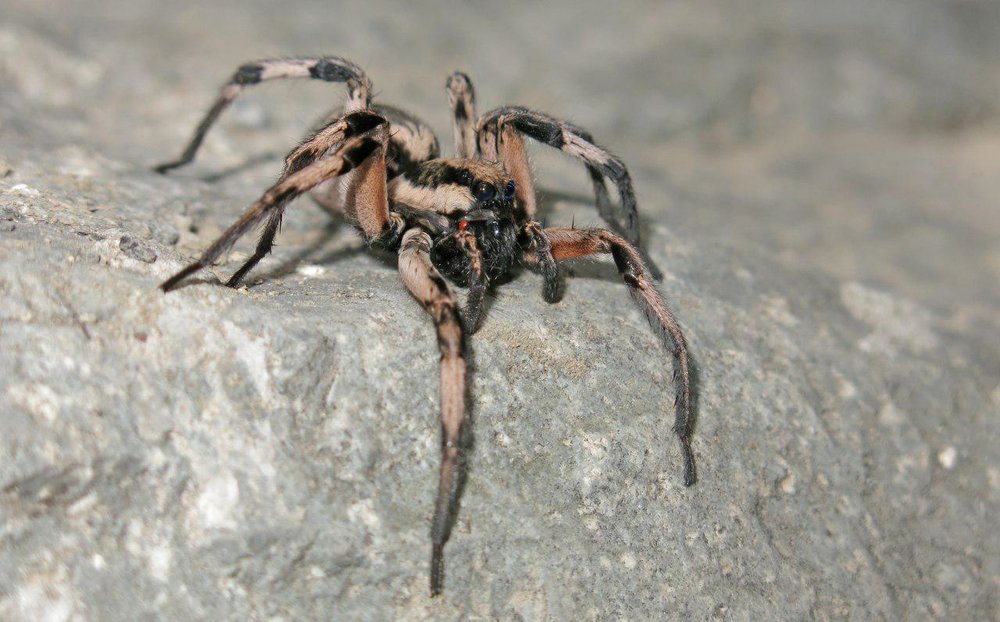Sturdy Aragog of Harry Potter found in Iran

Spiders are some of the most feared and least understood creatures in the animal world. These hairy hunters are famous for spinning webs but also very useful to humans, because they control insect pests and keep their numbers in check.
Due to the lack of information, finding new spider species in Iran is possible. Spiders in Iran live nearly everywhere, from South to North, from West to East. Forests, deserts, grasslands, caves, mines, burrows and even urban areas have the chance of harboring new spider species as the most sophisticated invertebrate predators.
A new species of burrowing wolf spiders in Iran has been recently described by Anton A. Nadolny from Institute of Marine Biological Research of Russian Academy of Science and his colleague Alireza Zamani from Science College of University of Tehran. The new species is named Lycosa aragogi, because of its exotic icons which is similar to a fictional spider from the “Harry Potter” series.

Burrow dweller recognized
From the outside, a spider's body is very different from ours. Lycosidae is one of the largest spider families. Just like other spiders, they have hard outer skeleton called an exoskeleton and eight legs that have many joints. Spiders of Lycosidae (derived from the Latin Lycosa which means “wolf”) are robust and agile hunters because of their excellent eyesight and other abilities. The most important and unique characteristic of wolf spiders refers to their no interest in spinning webs. About half of all spiders spinning webs, but wolf spiders have jaw-dropping techniques to catch their prey, then there is no need to spin webs. Lycosidae in Iran are poorly known because of lack of investigation.
The type genus, Lycosa, refers to large sized wolf spiders. In the Palearctic region, Lycosa is represented by 61 species according to the World Spider Catalog, four of which are known to occur in Iran, with a single record of one of them being definitely hinged on a misidentification. Meanwhile, one more species has been recorded from Iran by an Iranian researcher in 1994, but the record was consequently assigned to another species by Alireza Zamani, a young Iranian arachnologist. At this point, Zamani and his colleague, Anton A. Nadolny identified a new species of this genus which has been rapidly gaining ground because of its unique name, Aragog.

Aragog, ingenious spider
Iranian Aragog is a skilled nighttime hunter who lives in mountainous areas with xerophyte vegetation of southeastern Iran. This species is yellow, brown and black in color. As you can see in the picture, the dull colors help to hide the spider as it hunts along the ground. It has long back legs to chase after its prey. Aragog has large eyes; the position and arrangement of a spider's eye can be useful in telling which family it belongs to and how it catches food. The main eyes of Aragog produce a focused image and help in pouncing on prey. Secondary eyes have light-sensitive cells to pick up movements from a distance. They all work rather like a telephoto lens on a camera. Spiders such as Aragog that spend much of their time in burrows usually rely on their eyesight and sense of touch to test objects around them.

Aragog’s tale
Some typical names of species are deceiving, but some boast public attention for the purpose of drawing conservation inferences in the near future. Those names which are popular among people has the chance to gain importance in specific situations, it is quite simple: if people know spiders, they will help conservationists and if not, there would be little or even no chance of public support. Aragog has a legendry tale in “Harry Potter” series. The researchers pointed to some similar characteristics between this new species and the fictional character of Aragog. Researchers believe that gaining public attention to these small, unique creatures is amongst the most important goals.
Zamani told the Tehran Times "as some people hate or fear spiders, it could be hard to soften the relationship between them. A considerable percentage of all people around the world have arachnophobia, which is a certain degree of fear of spiders, and meanwhile others believe that spiders are messy and so on. How can we educate these people, is there any hope? I think yes, perhaps choosing interesting names for our newly discovered species can be useful".
Leave a Comment